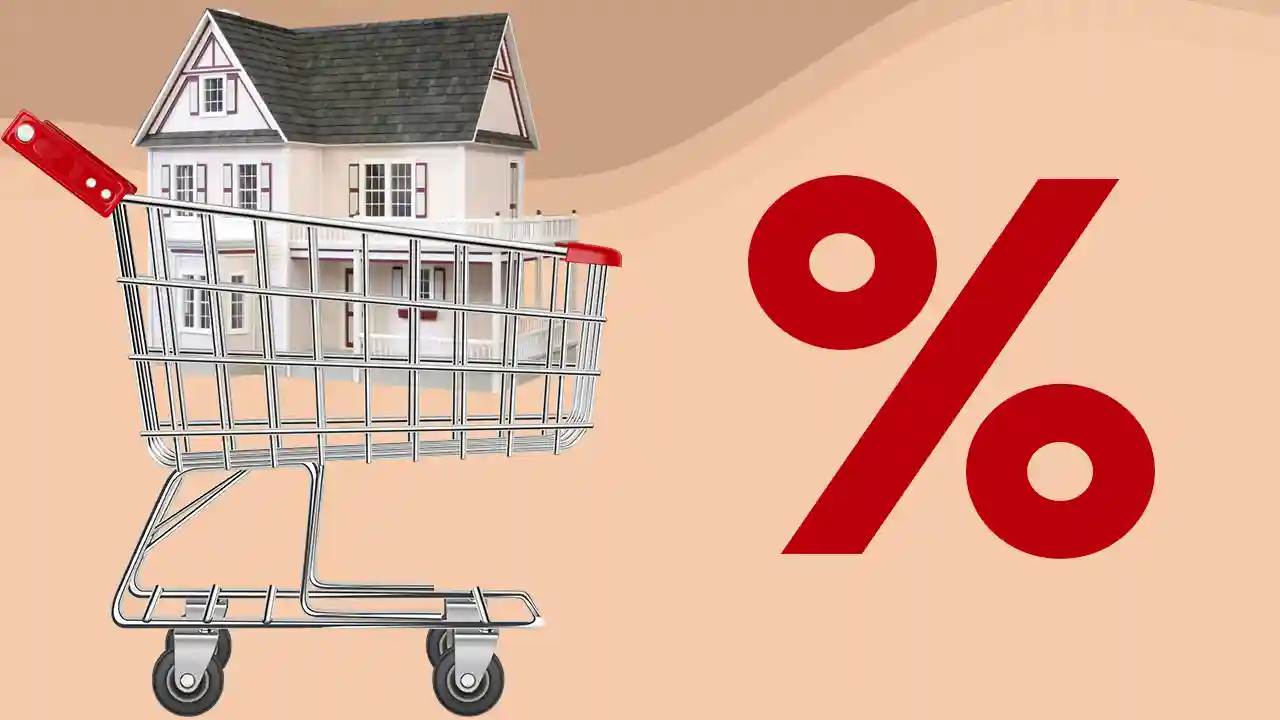Mortgagerateslocal.com – Buying a home is one of the most important financial decisions you will ever make. But before you sign on the dotted line, you need to shop for the best mortgage rate possible. Why? Because even a small difference in interest rates can save you thousands of dollars over the life of the loan.
But how do you shop for mortgage rates? What factors affect the rate you can get? And how can you compare different offers from different lenders?
We will answer these questions and more. We will show you how to shop for mortgage rates in five easy steps, and give you some tips and tricks to get the lowest rate possible.
Whether you are a first-time homebuyer or a seasoned homeowner looking to refinance, this guide will help you navigate the mortgage market and find the best deal for your situation. Let’s get started!
Check Your Credit Score to Shop for Mortgage Rates
The first step to shop for mortgage rates is to check your credit score. Your credit score is a number that reflects your credit history and how well you manage your debt. Lenders use your credit score to determine your eligibility for a mortgage and the interest rate they will offer you.
Generally speaking, the higher your credit score, the lower your interest rate. That’s because lenders see you as a lower risk borrower who is more likely to repay the loan on time. According to FICO, the most widely used credit scoring model, the average interest rate for a 30-year fixed-rate mortgage, was 5.9% for borrowers with a credit score of 760 or higher, compared to 7.2% for borrowers with a credit score of 620 or lower.
Therefore, it pays to check your credit score before you apply for a mortgage and take steps to improve it if necessary. You can check your credit score for free from some credit card issuers and credit-related services.
You can also get your credit reports for free once a year from the three major credit bureaus (Equifax, Experian, and TransUnion) at AnnualCreditReport.com. Your credit reports contain the information that is used to calculate your credit score, such as your payment history, credit utilization, and credit inquiries.
If you find any errors or inaccuracies in your credit reports, you should dispute them as soon as possible. Errors can lower your credit score and affect your chances of getting a good mortgage rate. You can dispute errors online or by mail with the credit bureau that issued the report. The credit bureau has 30 days to investigate and correct the error.
Another way to boost your credit score is to practice good credit habits, such as paying your bills on time, keeping your credit card balances low, and avoiding applying for new credit too often. These habits will show lenders that you are responsible with your debt and can handle a mortgage payment.
Weigh the Different Types of Mortgages
The next step to shop for mortgage rates is to weigh the different types of mortgages available. There are two basic types of mortgages: fixed-rate and adjustable-rate. Each type has its pros and cons, and the best one for you will depend on your preferences, goals, and financial situation.
Fixed-Rate Mortgage
A fixed-rate mortgage is a mortgage that has a set interest rate that does not change for the entire term of the loan. This means that your monthly payment will stay the same throughout the loan, regardless of market fluctuations. A fixed-rate mortgage is a good option if you plan to stay in your home for a long time, and you want the stability and predictability of a fixed payment.
The most common term for a fixed-rate mortgage is 30 years, but you can also choose shorter terms, such as 15 or 20 years. A shorter term will result in a higher monthly payment, but you will pay less interest over the life of the loan and build equity faster. A longer term will result in a lower monthly payment, but you will pay more interest over the life of the loan and build equity slower.
The interest rate for a fixed-rate mortgage will depend on several factors, such as your credit score, the loan amount, the loan-to-value ratio, the term of the loan, and the current market conditions. Generally, the higher your credit score, the lower your interest rate.
The larger your loan amount, the higher your interest rate. The higher your loan-to-value ratio, the higher your interest rate. The shorter your loan term, the lower your interest rate. And the lower the market interest rates, the lower your interest rate.
Adjustable-Rate Mortgage
An adjustable-rate mortgage (ARM) is a mortgage that has a variable interest rate that changes periodically according to a specific index and margin. This means that your monthly payment will vary depending on the current interest rate. An ARM is a good option if you plan to sell or refinance your home in a few years, and you want to take advantage of lower initial interest rates.
The most common type of ARM is a hybrid ARM, which has a fixed interest rate for an initial period, followed by an adjustable interest rate for the remaining term of the loan. For example, a 5/1 ARM has a fixed interest rate for the first five years, and then adjusts every year thereafter. The initial interest rate for an ARM is usually lower than the interest rate for a fixed-rate mortgage, but it can increase or decrease after the fixed period ends.
The interest rate for an ARM will depend on several factors, such as your credit score, the loan amount, the loan-to-value ratio, the initial fixed period, the adjustment frequency, the index, the margin, and the interest rate caps.
Generally, the higher your credit score, the lower your interest rate. The larger your loan amount, the higher your interest rate. The higher your loan-to-value ratio, the higher your interest rate. The longer your initial fixed period, the higher your interest rate.
The more frequent your adjustments, the higher your interest rate. The higher the index, the higher your interest rate. The higher the margin, the higher your interest rate. And the higher the interest rate caps, the higher your interest rate.
The index is a benchmark interest rate that reflects the general market conditions, such as the London Interbank Offered Rate (LIBOR) or the U.S. Treasury Constant Maturity Rate. The margin is a percentage that is added to the index to determine your interest rate. The interest rate caps are limits on how much your interest rate can change at each adjustment and over the life of the loan.
How To Shop For Mortgage Rates
The next step to shop for mortgage rates is to shop multiple lenders. Different lenders may offer different interest rates and fees for the same type of mortgage, so it pays to compare offers from at least three to five lenders. By shopping around, you can save money on interest and closing costs, and find the best deal for your situation.
There are many sources of mortgages, such as banks, credit unions, online lenders, mortgage brokers, and nonbank financial companies. Each source has its advantages and disadvantages, and you should consider them carefully before choosing a lender. Here are some tips to help you shop multiple lenders:
1. Ask your real estate agent for recommendations
Your real estate agent may have a relationship with a local mortgage broker or lender who understands the market and the types of mortgage programs you may qualify for. For example, some states and localities have first-time homebuyer programs or down payment assistance programs that can help you save money on your mortgage. A broker or lender who is familiar with these programs can help you find the best option for your situation.
2. Use online mortgage comparison tools to Shop for Mortgage Rates
There are several websites and apps that let you compare mortgage rates and fees from multiple lenders at once. These tools can save you time and hassle, and help you find the best offer for your situation.
However, keep in mind that some of these tools may not include all the lenders in the market, and some of them may receive commissions from the lenders they feature. Therefore, you should always verify the information you get from these tools and do your own research before choosing a lender.
3. Get rate quotes from different types of lenders
Don’t limit yourself to one type of lender, such as a bank or a credit union. You may be able to find a better deal from an online lender or a nonbank financial company, especially if you have a low credit score or a unique financial situation.
Online lenders and nonbank financial companies may offer more flexible and innovative mortgage products, such as interest-only loans, negative amortization loans, or stated income loans. However, these products may also come with higher risks and fees, so you should be careful and understand the terms and conditions before choosing them.
4. Get prequalified or preapproved
Getting prequalified or preapproved for a mortgage can help you shop for mortgage rates more effectively. Prequalification is a simple process that involves providing some basic information about your income, assets, debts, and credit score to a lender, who will then give you an estimate of how much you can borrow and the interest rate you can expect.
Preapproval is a more formal process that involves submitting a mortgage application and providing documentation to verify your information, such as pay stubs, bank statements, tax returns, and credit reports.
The lender will then give you a conditional approval for a specific loan amount and interest rate, subject to final verification and appraisal. Getting prequalified or preapproved can help you narrow down your options and negotiate better terms with the lenders you are interested in. It can also show sellers that you are a serious and qualified buyer, which can give you an edge in a competitive market.
5. Compare Loan Estimates to Shop for Mortgage Rates
A loan estimate is a standardized document that lenders are required to provide you within three business days of receiving your mortgage application. The loan estimate shows you the key features and costs of the loan offer, such as the interest rate, the monthly payment, the closing costs, and the annual percentage rate (APR).
The loan estimate can help you compare different offers from different lenders and choose the best one for your situation. However, you need to know how to read and understand the loan estimate, and what to look for when comparing them. Here are some tips to help you compare loan estimates:
- Compare the interest rates. The interest rate is the percentage of the loan amount that you will pay in interest each year. The lower the interest rate, the lower your monthly payment and the less interest you will pay over the life of the loan. However, the interest rate is not the only factor that affects the cost of the loan. You also need to consider the fees and points that the lender may charge you.
- Compare the fees and points. The fees and points are the charges that the lender may impose on you to originate and process the loan. The fees may include application fees, origination fees, underwriting fees, appraisal fees, credit report fees, and other fees. The points are prepaid interest that you pay upfront to lower your interest rate. One point is equal to 1% of the loan amount. The fees and points are usually included in the closing costs, which are the total amount of money you need to pay at closing to finalize the loan. The lower the fees and points, the lower your closing costs and the less money you need to pay upfront. However, you may also need to consider the trade-off between the fees and points and the interest rate. Sometimes, paying more fees and points can lower your interest rate, and vice versa. You need to calculate the break-even point, which is the time it takes for the savings from the lower interest rate to offset the higher fees and points. If you plan to stay in your home longer than the break-even point, it may be worth paying more fees and points to get a lower interest rate. If you plan to sell or refinance your home sooner than the break-even point, it may be better to pay less fees and points and get a higher interest rate.
- Compare the APRs. The APR is the annual cost of the loan expressed as a percentage. The APR includes the interest rate, the fees, the points, and some other charges that you may pay for the loan. The APR can help you compare the true cost of different loan offers, as it reflects the total amount of interest and fees you will pay over the life of the loan. The lower the APR, the lower the cost of the loan. However, the APR is not a perfect measure of the cost of the loan, as it does not account for some factors, such as the loan term, the loan type, the prepayment penalties, and the future interest rate changes. Therefore, you should not rely solely on the APR to compare loan offers, but also consider the other features and costs of the loan.
6. Negotiate the Best Deal
The fifth and final step to shop for mortgage rates is to negotiate the best deal. Once you have compared loan estimates from different lenders and narrowed down your options, you can try to negotiate with the lenders to get a better offer. You can negotiate various aspects of the loan, such as the interest rate, the fees, the points, the closing costs, and the loan terms. Here are some tips to help you negotiate the best deal:
- Ask for a rate lock. A rate lock is a guarantee from the lender that they will honor the interest rate and the fees and points that they quoted you for a certain period of time, usually 30 to 60 days. A rate lock can protect you from the risk of rising interest rates while you finalize the loan. However, a rate lock may also prevent you from taking advantage of lower interest rates if they fall during the lock period. Therefore, you should ask the lender for a rate lock only when you are confident that you will close the loan within the lock period, and that the interest rate is favorable for you. You should also ask the lender about the terms and conditions of the rate lock, such as the expiration date, the fees, and the possibility of extending or modifying the lock.
- Ask for a lower interest rate. You can ask the lender to lower the interest rate that they offered you, especially if you have a strong credit score, a large down payment, or a low debt-to-income ratio. You can also show the lender the loan estimates from other lenders that have lower interest rates, and ask them to match or beat them. However, keep in mind that the lender may not be willing or able to lower the interest rate, or they may charge you more fees and points to do so. You need to weigh the benefits and costs of getting a lower interest rate, and decide if it is worth it for you.
- Ask for lower fees and points. You can ask the lender to lower the fees and points that they charge you for the loan, especially if they are higher than the average or the market rates. You can also show the lender the loan estimates from other lenders that have lower fees and points, and ask them to match or beat them. However, keep in mind that the lender may not be willing or able to lower the fees and points, or they may increase the interest rate to do so. You need to weigh the benefits and costs of getting lower fees and points, and decide if it is worth it for you.
- Ask for lower closing costs. You can ask the lender to lower the closing costs that you need to pay at closing, especially if they are higher than the average or the market rates. You can also show the lender the loan estimates from other lenders that have lower closing costs, and ask them to match or beat them. However, keep in mind that the lender may not be willing or able to lower the closing costs, or they may increase the interest rate or the fees and points to do so. You need to weigh the benefits and costs of getting lower closing costs, and decide if it is worth it for you.
- Ask for better loan terms. You can ask the lender to modify the loan terms that they offered you, such as the loan amount, the loan term, the loan type, the prepayment penalties, and the interest rate caps. You can also show the lender the loan estimates from other lenders that have better loan terms, and ask them to match or beat them. However, keep in mind that the lender may not be willing or able to modify the loan terms, or they may increase the interest rate or the fees and points to do so. You need to weigh the benefits and costs of getting better loan terms, and decide if they are suitable for your situation.
Conclusion
Shopping for mortgage rates can be a daunting and confusing process, but it can also save you a lot of money and hassle in the long run. By following the five steps we outlined in this blog post, you can shop for mortgage rates like a pro, and find the best deal for your situation.
Remember to check your credit score, weigh the different types of mortgages, shop multiple lenders, compare loan estimates, and negotiate the best deal. And don’t forget to ask questions and do your research before you choose a lender and a loan.




